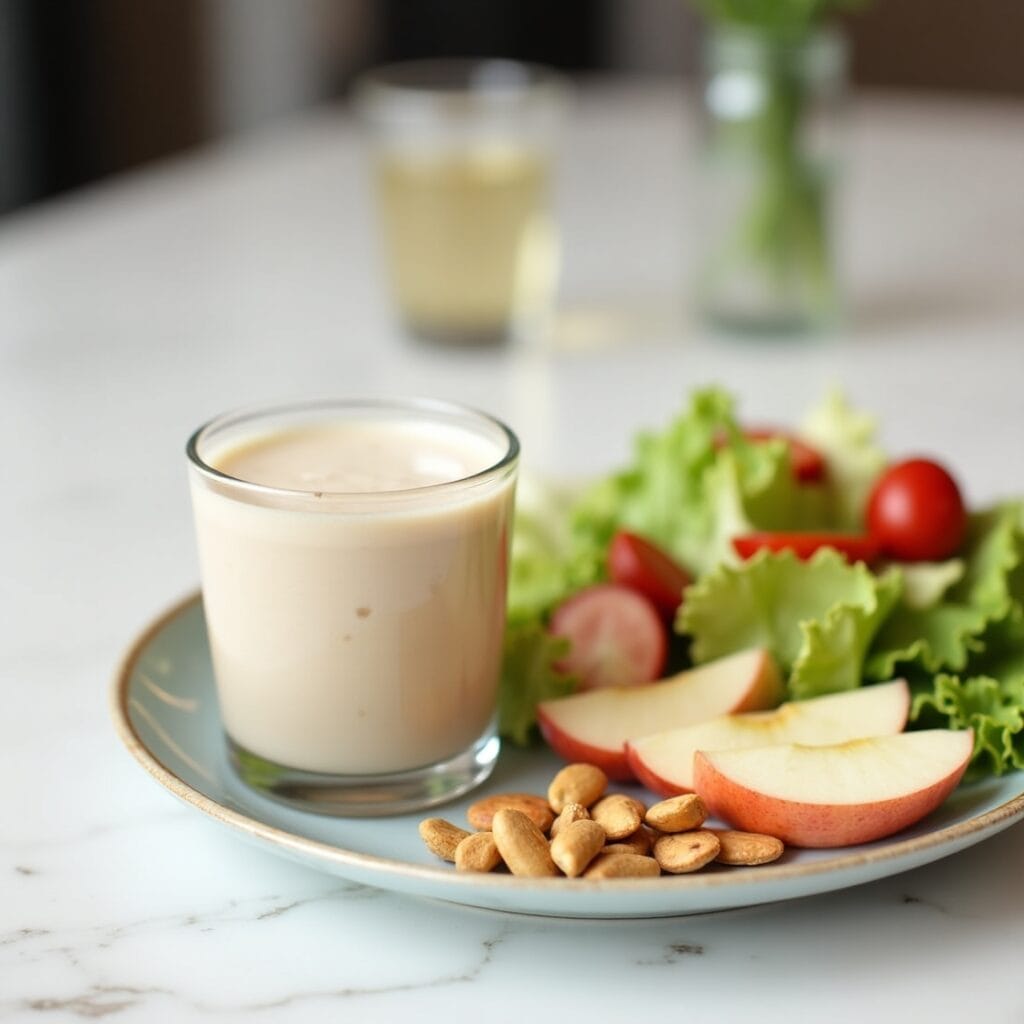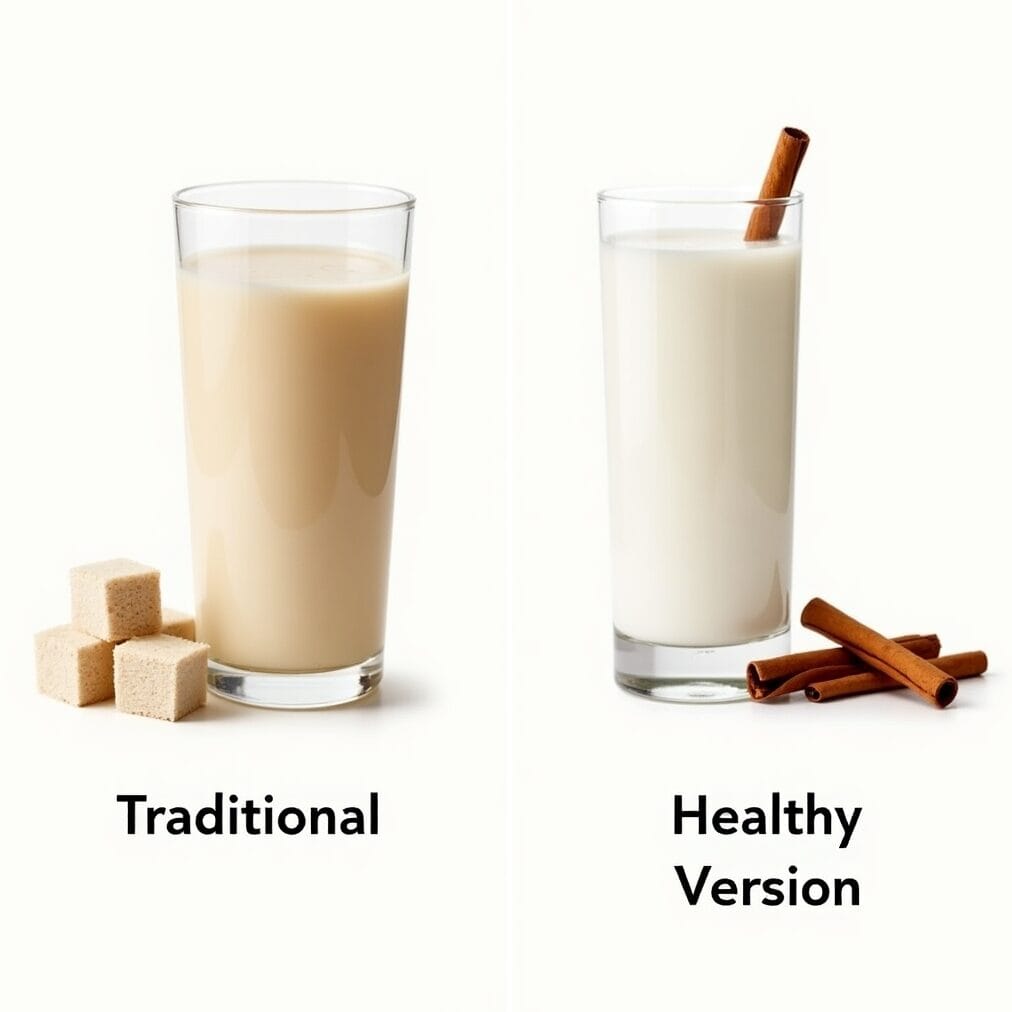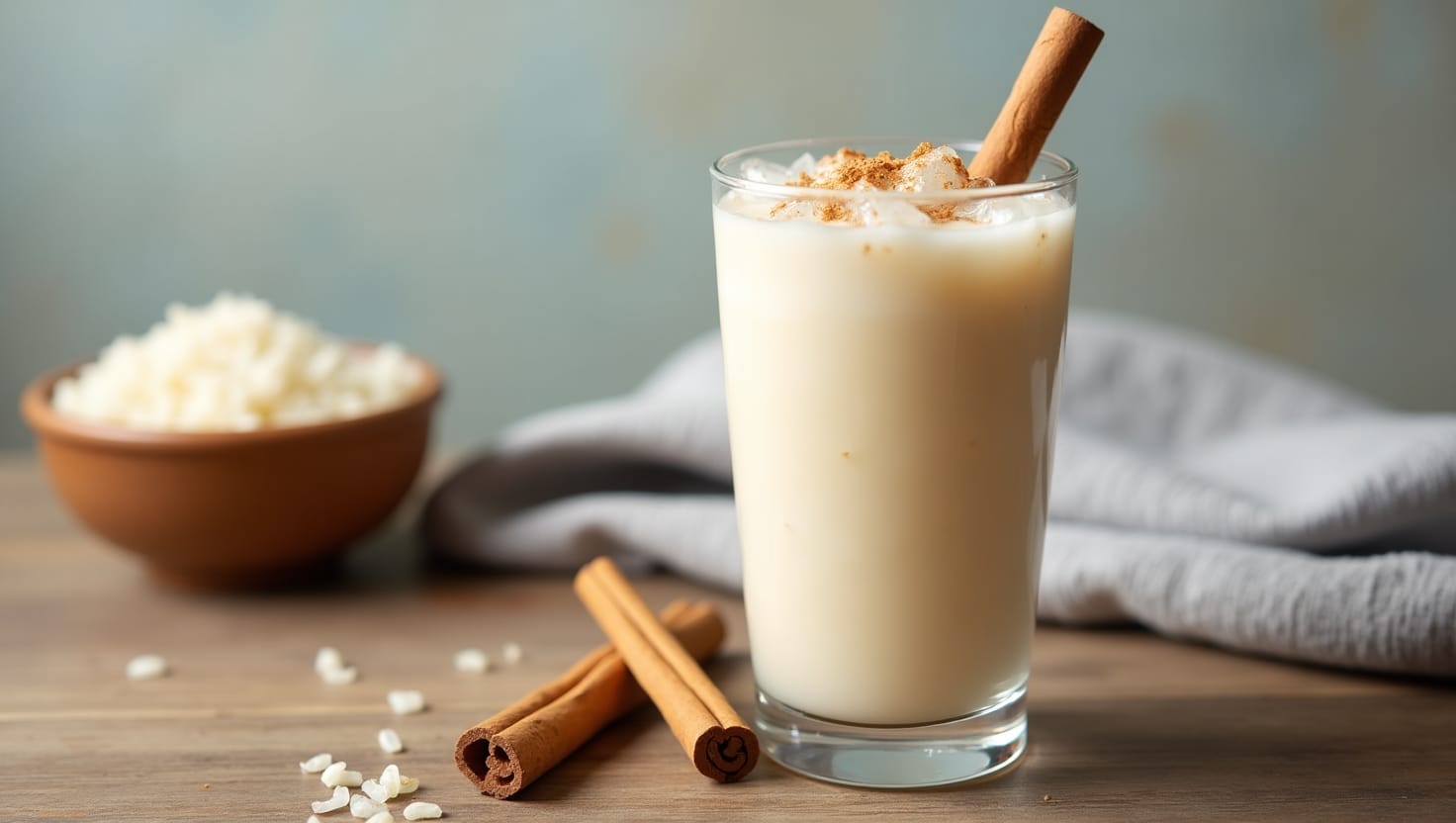Table of Contents
You’re focused on eating healthier, making mindful choices, and staying on track but then that craving hits: a tall, icy glass of creamy horchata. Sweet, cinnamon-spiced, and oh-so-refreshing… but is it actually diet-friendly?
Whether you’re cutting back on sugar, watching your calories, or simply trying to make smarter food choices, you might wonder if horchata has a place in your healthy lifestyle. The good news? You don’t have to give it up completely.
In this post, we’ll take a closer look at what horchata is made of, how it fits into a balanced diet, and smart tips for enjoying it without guilt. Let’s get into the facts.
What Is Horchata?
Horchata is a traditional, sweet, and creamy drink that has been enjoyed for centuries across various cultures—especially in Mexico, Spain, and parts of Latin America. Though recipes can vary, the most popular version in North America is Mexican horchata, made from soaked white rice, water, cinnamon, and sugar. Some recipes also include milk or condensed milk for extra creaminess.
There are also other types:
- Spanish horchata (horchata de chufa) is made from tiger nuts, not rice.
- Salvadoran and Honduran versions may include ground seeds, nuts, and even sesame.
The flavor is mild, nutty, slightly spiced, and often served cold—making it a refreshing treat, especially in warm weather.
While horchata tastes indulgent, it’s not always unhealthy by default. Its ingredients are simple and natural, but it’s the amount of sugar and serving size that really determine whether it fits into a healthy diet.
Nutritional Breakdown of Horchata
Before deciding whether horchata fits into a healthy diet, it’s important to understand what’s actually in it. While the ingredients are simple, the calories and sugar content can vary greatly depending on how it’s made—especially between store-bought and homemade versions.
Typical Nutritional Values (per 1 cup / 240ml):
- Calories: 150–250 kcal
- Carbohydrates: 30–45g
- Sugar: 15–30g (often added sugar)
- Fat: 2–5g
- Protein: 1–3g
Note: Store-bought horchata tends to be higher in added sugar and preservatives, while homemade versions give you more control over ingredients.
Key Nutritional Considerations:
- High in carbs and sugar: Horchata is naturally sweet, but many recipes go heavy on the sugar—especially commercially bottled brands.
- Low in protein and fiber: Unless you add nuts, seeds, or whole grains, horchata doesn’t offer much in terms of satiety or muscle support.
- Dairy-free (usually): Traditional horchata is made with water, not milk—making it suitable for those who are lactose intolerant (unless milk is added).
- Caffeine-free & gluten-free: A bonus for many health-conscious drinkers!
Great choice! Here’s Section 4: Is Horchata Healthy? — written to keep your general health-focused readers engaged, informed, and reassured.
Is Horchata Healthy?
The short answer is: horchata can be part of a healthy diet—if enjoyed mindfully.
Let’s break that down.
The Pros:
- Natural ingredients: Traditional horchata is made from simple, whole foods like rice, water, and cinnamon.
- No caffeine or gluten: It’s a naturally gluten-free and caffeine-free drink, which makes it a gentle option for sensitive stomachs.
- Cinnamon benefits: Cinnamon may help with blood sugar regulation and adds flavor without calories.
The Cons:
- High sugar content: Most commercial horchatas—and even homemade ones—use a generous amount of sugar, which adds empty calories and can spike blood sugar.
- Low in nutrients: On its own, horchata doesn’t offer much protein, fiber, or vitamins unless modified with healthier ingredients.
The Bottom Line:
Horchata isn’t “bad,” but it’s not exactly a nutrient powerhouse either. If you’re trying to eat clean or reduce sugar, you don’t have to cut horchata completely. Instead, treat it like an occasional indulgence or make a healthier version at home with simple tweaks.

Tips to Make Horchata Healthier
The great news? You don’t have to give up horchata to stay on track with your healthy eating goals. With just a few simple tweaks, you can enjoy this creamy, cinnamon-spiced drink with far less guilt—and even boost its nutritional value.
1. Control the Sugar
Most traditional horchata recipes use a lot of white sugar. Try these healthier options:
- Use less sugar overall—start with half the amount and taste before adding more
- Try natural sweeteners like:
- Stevia or monk fruit (zero-calorie options)
- Maple syrup or honey in moderation
- Medjool dates (blend in for natural sweetness + fiber)
2. Swap White Rice for Whole Grains
Want to add a little fiber and nutrients? Use:
- Brown rice for added fiber
- Oats or quinoa for a creamy texture with more nutrition
These grains release sugars more slowly and keep you full longer.
3. Use a Lighter Base
Instead of using condensed milk or full-fat dairy:
- Try unsweetened almond milk, oat milk, or cashew milk for a creamy, plant-based version
- If using dairy, go with low-fat or skim milk
4. Add Functional Ingredients
Upgrade your horchata by adding:
- Chia seeds or ground flax for omega-3s and fiber
- Vanilla extract for extra flavor without extra sugar
- A pinch of nutmeg or cardamom for a twist on flavor
5. Make It at Home
Homemade horchata is your best bet for controlling calories and ingredients. You can customize it to suit your taste, dietary goals, and lifestyle—plus it’s easy to make in big batches.

Can You Drink Horchata on a Diet?
Yes—you can drink horchata on a diet, as long as you enjoy it mindfully and in moderation.
Whether you’re eating clean, trying to lose weight, or just being more intentional with your nutrition, horchata doesn’t have to be completely off-limits. The key is knowing how to fit it into your overall daily intake without going overboard on calories or sugar.
Here’s How to Make It Work:
- Watch your portions: Stick to a small glass (around ½ to 1 cup) instead of sipping a full tall glass, especially with sweetened versions.
- Choose or make a lighter recipe: Homemade horchata with less sugar and a plant-based milk is a smart option.
- Balance it out: Pair it with a high-protein or fiber-rich meal or snack to slow sugar absorption and keep you satisfied.
- Don’t treat it like water: Think of horchata like a dessert or a flavored drink—not something to sip all day.
A Mindful Approach:
Like any treat, horchata can fit into a healthy lifestyle when you’re aware of what goes into it and how often you enjoy it. Instead of cutting it out completely, make space for it intentionally—you’ll feel more satisfied and more likely to stick with your goals long-term.
Final Thoughts: Can You Enjoy Horchata on a Diet?
The answer is yes—you can enjoy horchata as part of a healthy, balanced diet. While traditional versions can be high in sugar and calories, a little mindfulness goes a long way. By choosing smaller portions, making simple ingredient swaps, or preparing your own at home, you can satisfy your cravings without straying from your health goals.
Healthy eating isn’t about strict rules—it’s about balance, flexibility, and enjoying what you love in smarter ways. So next time you’re in the mood for something sweet and comforting, go ahead and sip that glass of horchata—just make it your way.

